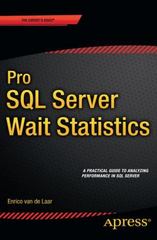Question
Consider the unconstrained NLP max x 1 x 2 - 5(x 1 -2) 4 -3(x 2 - 5) 4 once with the starting point of
Consider the unconstrained NLP
max x1x2 - 5(x1-2)4 -3(x2 - 5)4
once with the starting point of 1,3 and again with the starting point 4,0
(a) Use graphing software to produce a contour map of the objective function for x1 ? [1,4], x2 ?[2,8].
(b) Compute the move direction that would be pursued by gradient search Algorithm Step 0: Initialization. Choose any starting solution x ( 0 ), pick stopping tolerance ? > 0, and set solution index t ? 0 .
Step 1: Gradient. Compute objective function gradient ? f ( x ( t ) ) at current point x ^.
Step 2: Stationary Point. If gradient norm ? ? ? f ( x ( t ) ) ? ? < ? ??f(x(t))?( t ) is sufficiently close to a stationary point.
Step 3: Direction. Choose gradient move direction ?x(t+1)??f(x(t))
( + for maximize and - for minimize).
Step 4: Line Search. Solve (at least approximately) corresponding one-dimensional line search max or min f ( x ( t ) + ? ? x ( t + 1 ) ) to compute ? t + 1.
Step 5: New Point. Update
x ( t + 1 ) ? x ( t ) + ? t + 1 ? x ( t + 1 )
Step 6: Advance. Increment t ? t + 1 , and return to Step 1.
Gradient norm ? ? f ( x ( t ) ) ? ? ? ? Squire root ? j ( ? f /? x i ) 2 at x(0)=(1,3).
(c) State the line search problem implied by your direction.
(d)Solve your line search problem graphically and compute the next search point x(1).
(e) Do two additional iterations of Algorithm
Step 0: Initialization. Choose any starting solution x ( 0 ), pick stopping tolerance ? > 0, and set solution index t ? 0
Step 1: Gradient. Compute objective function gradient ? f ( x ( t ) ) at current point x ^.
Step 2: Stationary Point. If gradient norm ? ? ? f ( x ( t ) ) ? ? < ? ??f(x(t))?( t ) is sufficiently close to a stationary point.
Step 3: Direction. Choose gradient move direction ?x(t+1)??f(x(t))
( + for maximize and - for minimize).
Step 4: Line Search. Solve (at least approximately) corresponding one-dimensional line search max or min f ( x ( t ) + ? ? x ( t + 1 ) ) to compute ? t + 1.
Step 5: New Point. Update
x ( t + 1 ) ? x ( t ) + ? t + 1 ? x ( t + 1 )
Step 6: Advance. Increment t ? t + 1 , and return to Step 1.
Gradient norm ? ? f ( x ( t ) ) ? ? ? ? Squire root ? j ( ? f /? x i ) 2
to compute x(2) and x(3)
(f) Plot progress of the search on the contour map of part (a).
Step by Step Solution
There are 3 Steps involved in it
Step: 1

Get Instant Access to Expert-Tailored Solutions
See step-by-step solutions with expert insights and AI powered tools for academic success
Step: 2

Step: 3

Ace Your Homework with AI
Get the answers you need in no time with our AI-driven, step-by-step assistance
Get Started


